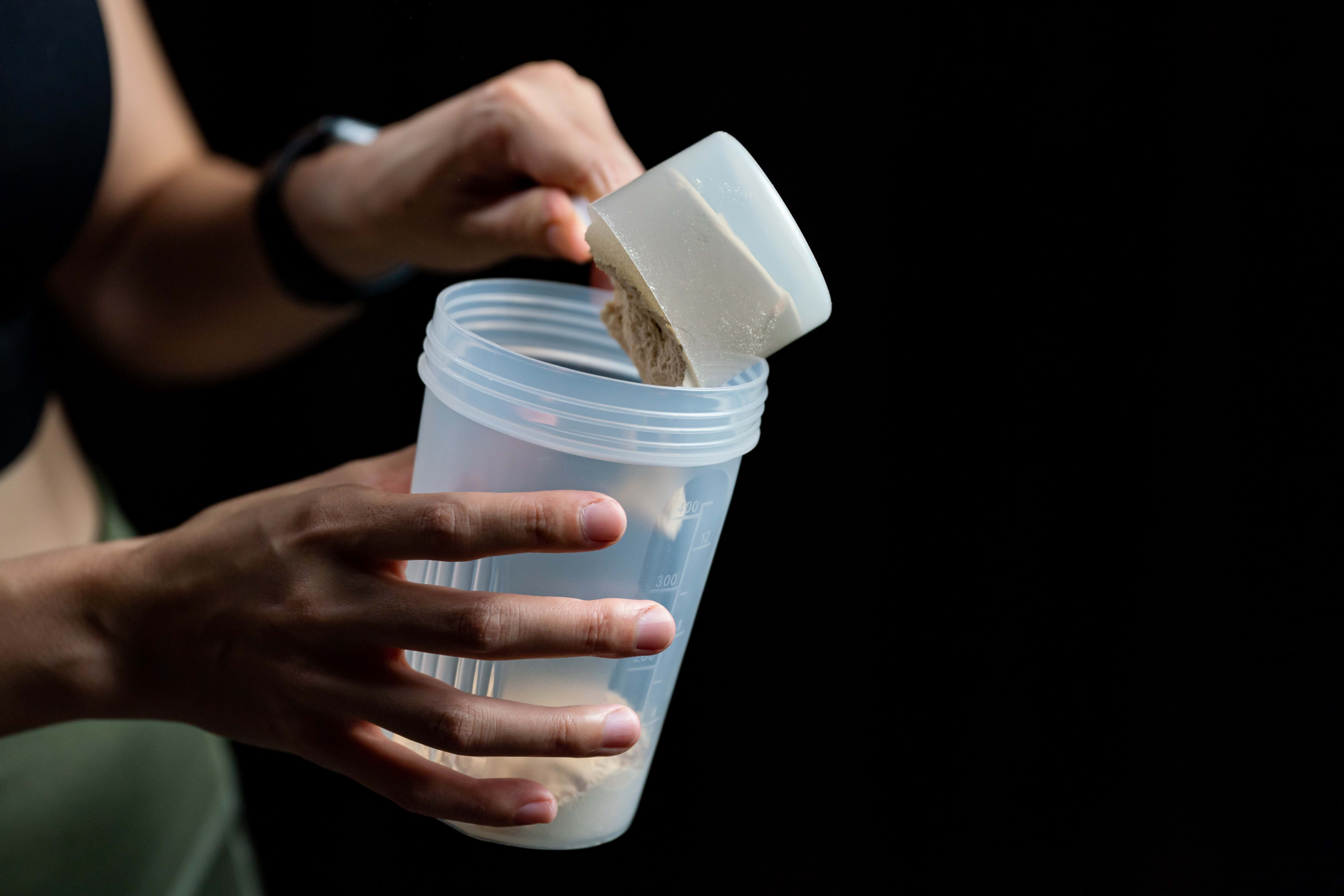
New research shows endurance athletes actually need more protein—not less—and most powders are well within safe limits. Here's what you should know about lead an protein powders.
An important (but misleading) article came out last week from Consumer Reports, looking at the amount of lead in protein drinks. The article went viral across major news outlets due to a shocking thesis: “CR’s tests of 23 products found that more than two-thirds of them contain more lead in a single serving than our experts say is safe to have in a day.”
You can breathe a sigh of relief. The article used a minuscule lead threshold that would take many fruits and vegetables off the shelves if grocery stores applied a similar standard. And most dark chocolate? Forget about it. I wouldn’t be surprised if these standards also flunked puppies and sunsets.
My mom, countless podcast listeners, and hundreds of Instagram followers sent me the study. If your mom likes running science, I wouldn’t be surprised if she sent it to me too. At first, I panicked. Based on recent science supporting higher protein needs for endurance athletes, I’ll often have 2 protein scoops a day during heavy training! I am like Tony Montana in Scarface, but with whey protein. Say hello to my little scooper.
To be serious, because I didn’t understand lead levels, I read the article with fear--both for my own health and the health of people who trust me. Then, I got to the section on protein needs, which cited levels as low as 0.8 grams of protein per kilogram of bodyweight. The article brushes away experts saying that more protein might be necessary, countering that “the latest research doesn’t support those arguments.” The article was entering my wheelhouse, and I knew that claim was inaccurate enough to play quarterback for the Cleveland Browns.
Protein Needs
A 2025 Sports Medicine article used the indicator amino acid oxidation method to debunk claims of lower protein needs. The IAAO method labels one of the essential amino acids like leucine with a stable carbon isotope that can be tracked in exhaled carbon dioxide. When amino acids are not high enough for complete protein synthesis, there is higher oxidation of amino acids, including the isotope indicator.
As the study says: “Once the dietary requirement is met, the oxidation of the indicator amino acid plateaus, and the resulting inflection or ‘breakpoint’ represents the mean protein requirement.”
Using that method, endurance athletes generally need 1.8 to 2 g/kg protein. The impact of age is still uncertain, but my guess is that master's athletes need to think about this point even more.
The authors summed it up in some helpful recommendations:
aim for 1.8 g/kg protein on standard training days
aim for 2 g/kg on recovery days
aim for 0.5 g/kg post-exercise, which may also help with glycogen resynthesis
Protein Supplementation Safety
Knowing that context on daily protein intake, I went back to the Consumer Reports article with my skeptic hat on. The article used 0.5 micrograms per day as the level of concern for lead. That value is based on the California Prop 65 level of concern, which has a huge safety margin built in. Meanwhile, the FDA has a recommended limit of 8.8 micrograms per day for women of childbearing age, and the average American gets 5.3 micrograms per day through their diet.
A 2021 study in Nature Scientific Reports did a similar lead analysis of fruit and vegetables in Europe, reporting the results in mg/kg dry weight. The average fresh apple had 0.009 mg/kg lead (with some fruits and vegetables far higher), translating to 1-2+ micrograms in a large apple. Or to put it like the Consumer Reports article... 200-400+% of the safe daily level! AN APPLE A DAY KEEPS THE DOCTOR AWAY BECAUSE YOU ARE ALREADY DEAD!
That study did not go viral, because the authors did not say that.
A 2020 study in Toxicology Reports evaluated protein powders and reached a much more comforting conclusion. “The data in the current study suggest that heavy metal exposure via protein powder supplement ingestion does not pose an increased non-carcinogenic risk to human health.” The authors argue that analysis “should be conducted within the context of relevant background exposures and established health based standards,” which is the opposite of a viral take, but it’s probably the correct one.
What It Means
That’s not to ignore the findings. It’s so important to know what’s in our food, and lead contamination is scary across the supply chain. There are some protein brands that are high even by more reasonable standards. It makes sense that vegan protein powders were higher given how lead finds its way into food. Whey proteins seem better, and I'd recommend going that route if you can. Companies need to be aware of the problems, and they need to be held accountable.
But on the broader scale, lead is everywhere in the food chain, and the levels in blood tests are dropping all over the world. If we're going to eat food, whether fresh or dried or in powder form, we'll be getting some lead. Most scientists would argue that it's best to view this all holistically.
That take won't go viral though.
Top Protein Supplements
The 2025 study on protein needs lays out the stakes. Protein matters because the amino acids act “as a substrate and signal for the repair and remodelling of skeletal muscle proteins.” But it goes a step further, with "new muscle mitochondrial proteins that power muscle energetics also are synthesised in response to exercise,” and those adaptations are sport-specific.
In other words, both muscular and aerobic adaptations rely on meeting protein needs, which average around 1.8-2 g/kg bodyweight.
Protein supplementation can help balance the amino acid equation, leading to better adaptation, performance, and general health. There are a few excellent options:
Ascent 100% Whey Protein - Brownie Batter has 25g of protein per serving, is Informed Sport Certified (meaning a third party has tested for banned substances), and 2.6g of Leucine, which actually triggers muscle protein synthesis - the process that tells your body “start repairing and building.” Most proteins don’t give you enough leucine to maximize that signal - Ascent does.
Gu Roctane Recovery Mix, SiS Beta Recovery, or Tailwind Recovery. Many studies find that a carb/protein mix after training can improve recovery and adaptation, and there are lots of good options like these at The Feed.
Fuel the work you're doing with a focus on carbs during activity. Outside of that, it's key to fuel adaptation with protein. And fat. And carbs.
In practice, that can just mean skewing your choices a bit more toward the protein option at each meal, and supplementing as needed. If you’re feeling like you’re not adapting as fast as you’d like (persistent soreness, fatigue, etc.) throw an extra protein scoop on it.
And if your mom reads viral science designed to be shared on social media, you can forward her this email. While you’re at it, send her a bag of The Feed Lab. Whey Protein, too. That’s scientific love.
